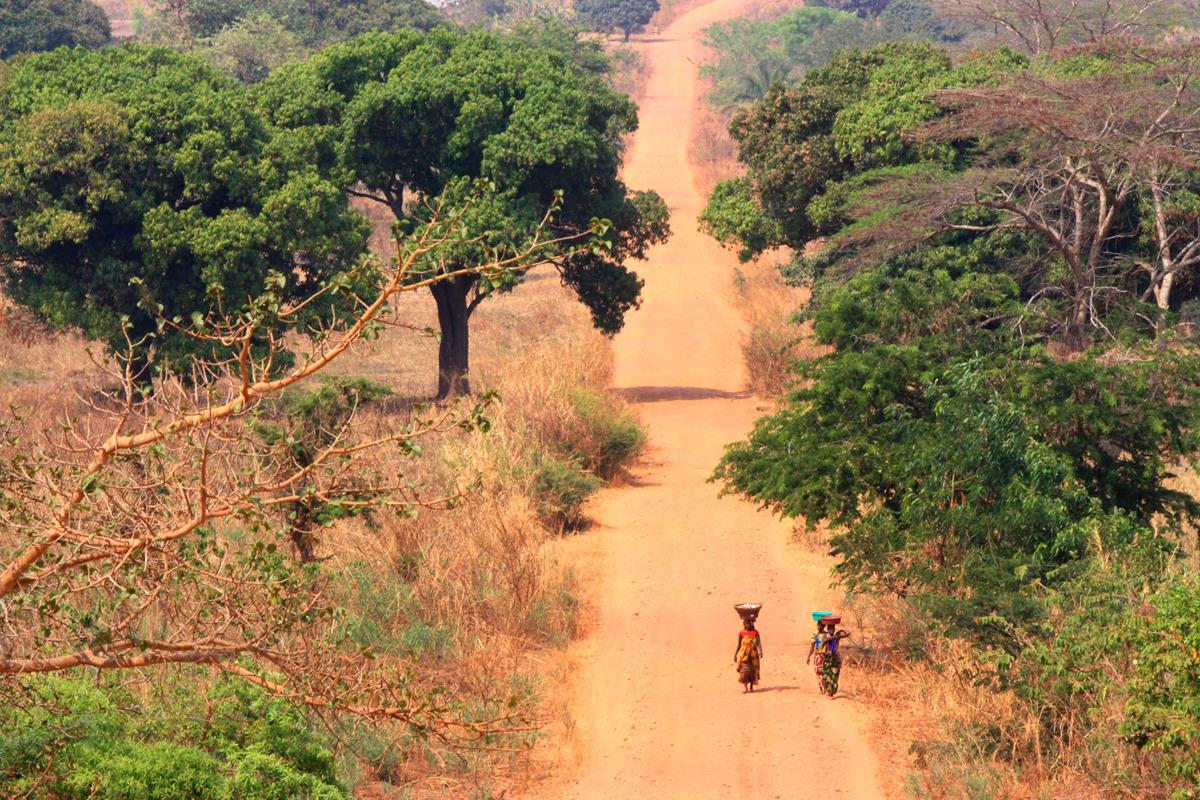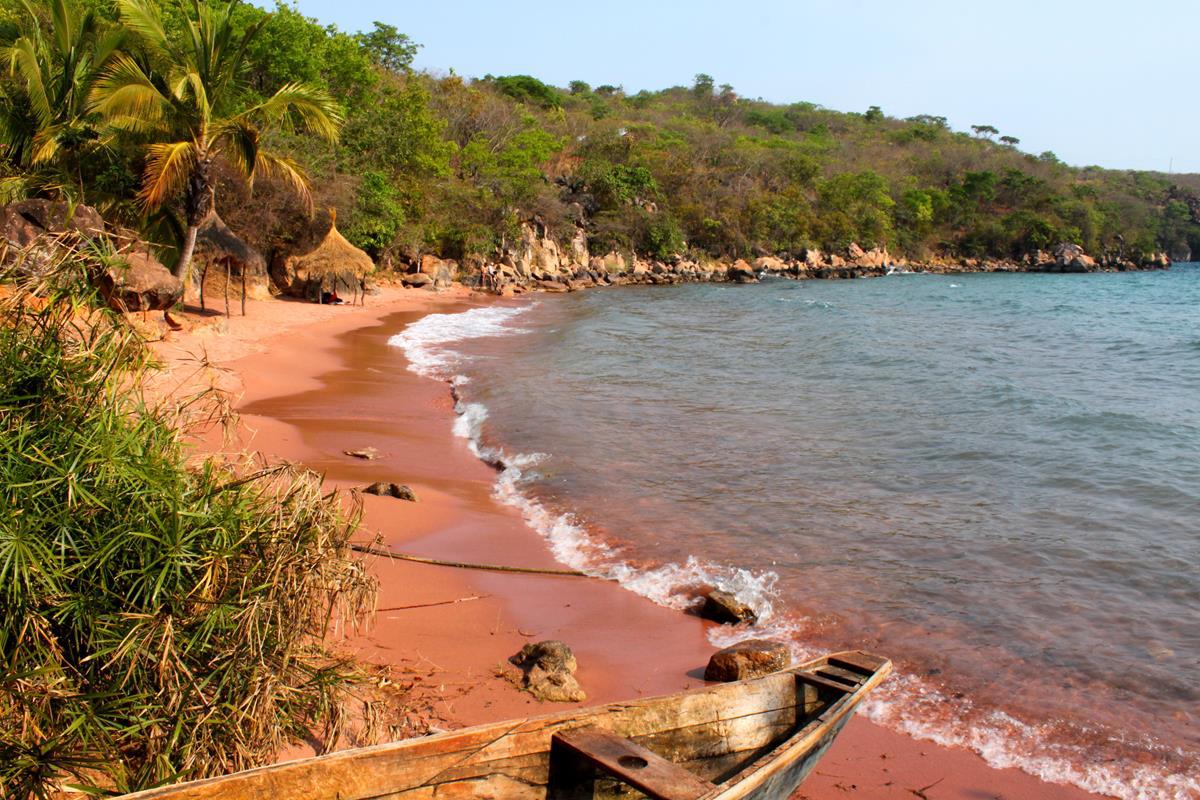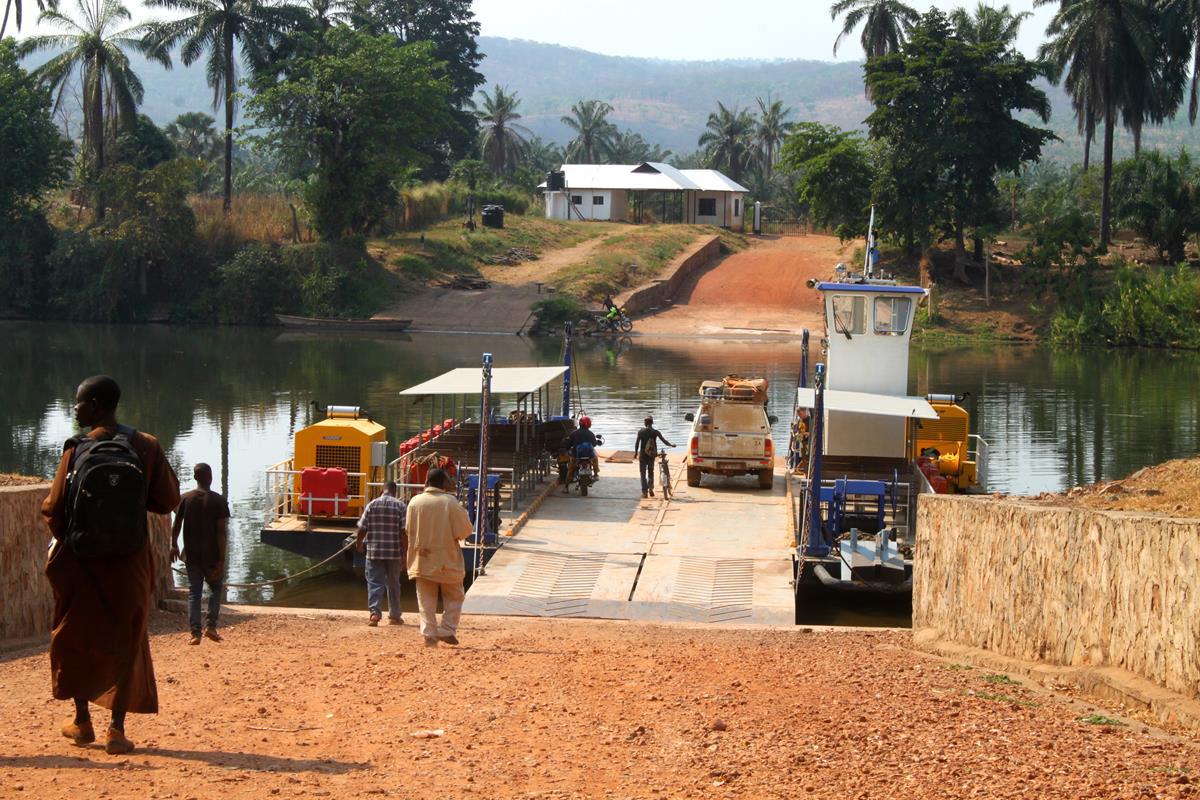As it seemed Burundi was sadly bordering on civil war we decided instead to head south through western Tanzania. Having heard from many fellow travellers that the roads are atrocious, we expected the worst but were pleasantly surprised. By Karin Theron
We were again lucky to have an easy border crossing at Rusumo and although many trucks use this route, there were no delays, other than the slow computer system issuing the temporary vehicle import permit. Without that we would have been through in half an hour.
Though the Rwandan countryside had begun to dry out as we neared the border at the Akagera River, it was interesting to notice the definite difference in vegetation as we entered Tanzania. The climate was notably warmer and drier than in Ethiopia, Uganda and Rwanda and we felt we were back in bushveld country; almost as though we had arrived back home…

Heading south-east, the B3 was quite badly potholed and when we turned onto the B8 gravel road at Nyakanazi to head south-west to Kigoma, we weren’t surprised that this was even worse.
As there were no campsites in the region and the available accommodation in Kibondo didn’t suit us, we decided to push on, having about two hour’s daylight before we would have to start looking for a bushcamping spot.
To our surprise the gravel road then improved tremendously and we enjoyed the contrast of red gravel against the bright green of new leaves.

We passed through the one dusty little village after the other and then, taking a small side road we found a clay quarry where we could bushcamp, out of sight. We enjoyed a peaceful evening under the bright moon and went to sleep to the sound of a nightjar…
Lake Tanganyika
Nearing Kigoma the next day and still on a good gravel road, we passed some palm forests in the otherwise dry countryside as we headed for Jakobsen Beach which had been recommended. Delighted, we camped under shade about 15 metres from a small, private, red sandy beach and thoroughly enjoyed swimming in the clear, 26 degree waters of Lake Tanganyika.

Lake Tanganyika is said to be the longest fresh water lake in the world, and at 1 434m the second deepest after Lake Baikal in Russia. The whole western shore of this magnificent lake is DRC territory while the top quarter of the eastern shore lies in Burundi, the remainder south being Tanzanian soil.

After a good night’s rest, lulled by the sound of water lapping gently, we went for a run. We crossed the little peninsula to the Katonga fishing village, passing a long pebbled beach where children played and women were doing their washing. As we jogged through the little village, everybody was happy to see the Muzungu. Some kids jogged with us for a few hundred metres and at one point two women, in long dresses, joined us joyfully for a short while.
In addition to our coffee and lunch stops next to the road, we have found running through villages a wonderful way to interact with the local people.
A number of fellow travellers had told us that the main road south from Kigoma to Kapili is terrible. So when we saw a track on the map running south next to the lake, about halfway to the Mahale Mountain National Park, we decided to see if we could use this alternative. We figured the road might at least be scenic, if slow and rough like the main road.

We were pleasantly surprised by a good gravel road and at Ilagala crossed the Malagarasi River on a well-run ferry. It was a pleasant drive, passing through many small villages, getting glimpses of the lake from time to time, whilst the road undulated through palm groves in the valleys.

We often stopped to inquire about our route as there was nothing on the T4A map and the track on Open Source Maps had stopped well short. However, the locals could hardly speak English and didn’t seem to know of a way to our destination.

Persevering, we were very fortunate to meet a young American whose staff was loading rocks into his truck. It turned out that he surveyed new road routes and had built the gravel road from Kigoma to the Mahale Mountains National Park that we were using. This park bulges into Lake Tanganyika and is dominated by the Mahale Mountain chain running from the north-west across the middle of the park.
He informed us that there was no direct route south to Kapili and to get there we would have to take a tiny track 45km east across the mountains to Mwese village, from where it would still be a long drive to reach Mpanda and the main road running south.
He warned us that it was a long way and that the track up the first mountain was extremely rocky and rough, but that we should keep going. Then we would reach Z-mountain, known as such for its rocky switchbacks up the climb and then shortly afterwards a makeshift wooden bridge across the river.

He told us to persevere regardless of what we saw as we would get through. Being unable to transfer his GPS track, we photographed it from his phone and pressed on, shortly passing a metal bridge, the landmark to turn east onto the trail.

This was no regular road, so engaging 4WD and at times low range, we crawled our way up and down the climbs, the 45km to Mwese village taking us 3,5 hours. We traversed some really rough and rocky patches as we crossed two mountains, exactly as he had described.

Had we attempted this terrain uninformed we would have certainly turned back. However this was rural Tanzania at its best! We passed through some beautiful woodland forest and bamboo clad valleys, although it was sad to see the destruction of both trees and the bamboo in places…


After Mwese we reached a good, wide gravel road and pressed on to make the most of the daylight.

Then, as it was getting late, we drove well off the road to find a quiet wild camp spot in a bamboo forest and enjoyed another peaceful night in the bush, very satisfied to have recorded another adventure track for 4WD enthusiasts. (We later learnt at Lake Shore Lodge that ours was only the second vehicle they knew of to have traversed this route.)

The next morning we were again up early and continued east for Mpanda on good roads. After about two and a half hours we linked up with the main B8 running south to the Zambian border and although this gravel road was much busier, corrugated and potholed, it was still far better than expected, allowing us to average 45km/kph even through the Katavi National Park.
Passing through Katavi National Park
There we were lucky enough to spot giraffe and a herd of buffalo close to the road and took the liberty of diverting a few kilometres to enjoy morning coffee at Lake Katavi. We overlooked the grassland of the mostly dry lake while hippos, waterbuck, zebra and bushbuck grazed in the distance and a variety of water birds gathered at the water holes. Contrary to our later experience, luckily the blue and black insecticide treated flags scattered along the road seemed to have controlled the tsetse flies.

Heading for Kapili
The road to Kapili was a little corrugated, but nothing compared to the roads into Serengeti and Mana Pools, or the worst of our trip, the two day drive down the west of Lake Turkana from Lodwar to Marich Pass. We could once again average 50-60 kph and learnt from our hostess Louise, upon arriving at Lake Shore Lodge, that it had just received its annual resurfacing.

Lake Shore Lodge, built on the site of a former village by means of a 66 year long lease, is owned by Louise and Chris Horsfall who are originally from South Africa. They have developed this beautiful lodge which offers upmarket accommodation as well as our preferred option, camping under huge mango trees.

From Kapili we headed for Sumbawanga and then on to cross the frontier to Zambia at Kasesya, which we found was yet another small, quiet and pleasant border post. We were pleased to have explored the backroads of Western Tanzania and were looking forward to Zambia where we would spend some time with family and friends in the Kafue National Park.



Hi Karin, we are planning to do this trip next year in the dry season and really looking forward to it. Could I ask you for a bit more info? Did you go into Mahale Mountain reserve? If yes, where did you get on the boat? You mentioned that the road over the mountain was rocky – are we talking large boulders or like in your photo above? Sorry for the 1000 questions but yours is the most comprehensive info we could find so far. It was suggested to us by someone on the 4×4 forum.
Thanks in advance
Carol
Hi Carol, no we did not enter the Mahale Mountain Reserve. I would say that the road was rocky rather than having big boulders. It was slow but perfectly doable. The biggest challenge was the fact that the road wasn’t visible on any map.
Thanks a lot for the info. Looks like it’s worth a try.
Hello Carol,
did you manage to get this route, and did you manage to visit Mahale Mountains Park, we are planning this route this year and will be grateful for any information.
Nice adventure. See… running breaks the ice with locals. They engage in curious conversation right away.
Hi Karen & Pete,
enjoy your trip
Well done Karin, that’s adventure.
Beautiful landscape and great photography.
Just remind me then, how long are you rolling now?
Enjoy Zambia then and some well deserved rest.
Cheers
Walter
Beautiful Karen